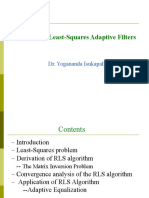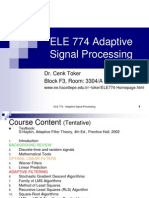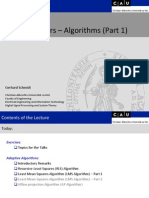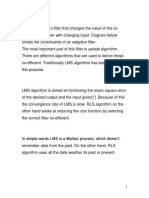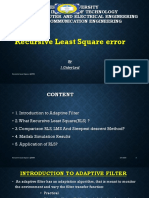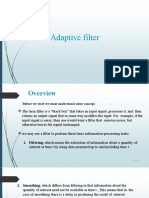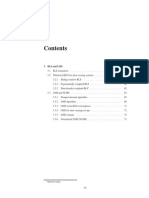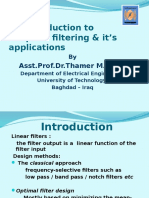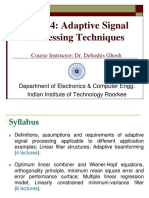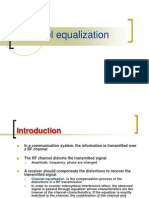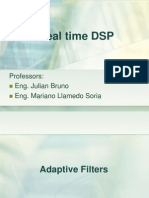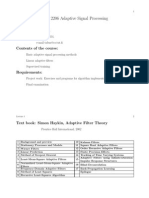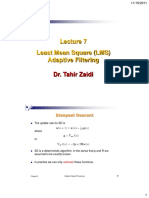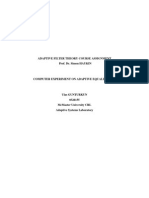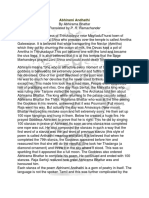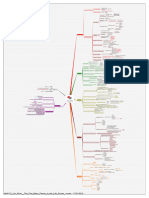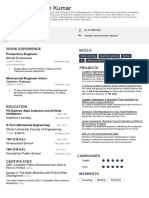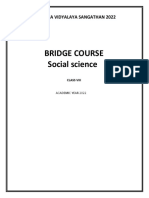0% found this document useful (0 votes)
199 views21 pagesRecursive Least-Squares (RLS) Adaptive Filters
Recursive Least-Squares (RLS) is an adaptive filtering algorithm that recursively updates filter coefficient estimates using a weighted least-squares approach. RLS introduces a weighting factor to the standard least-squares cost function, allowing estimates to be updated recursively with each new sample. The weighting factor acts as a forgetting factor that assigns more importance to recent samples. The RLS algorithm derives a recursive solution to the weighted normal equations using the Matrix Inversion Lemma. This allows the inverse autocorrelation matrix and filter coefficients to be computed recursively with each iteration. RLS converges faster than LMS on average, often in an order of magnitude fewer iterations, though it has a higher computational complexity per iteration.
Uploaded by
Rathva brijesh r.Copyright
© © All Rights Reserved
We take content rights seriously. If you suspect this is your content, claim it here.
Available Formats
Download as PPT, PDF, TXT or read online on Scribd
0% found this document useful (0 votes)
199 views21 pagesRecursive Least-Squares (RLS) Adaptive Filters
Recursive Least-Squares (RLS) is an adaptive filtering algorithm that recursively updates filter coefficient estimates using a weighted least-squares approach. RLS introduces a weighting factor to the standard least-squares cost function, allowing estimates to be updated recursively with each new sample. The weighting factor acts as a forgetting factor that assigns more importance to recent samples. The RLS algorithm derives a recursive solution to the weighted normal equations using the Matrix Inversion Lemma. This allows the inverse autocorrelation matrix and filter coefficients to be computed recursively with each iteration. RLS converges faster than LMS on average, often in an order of magnitude fewer iterations, though it has a higher computational complexity per iteration.
Uploaded by
Rathva brijesh r.Copyright
© © All Rights Reserved
We take content rights seriously. If you suspect this is your content, claim it here.
Available Formats
Download as PPT, PDF, TXT or read online on Scribd
/ 21


